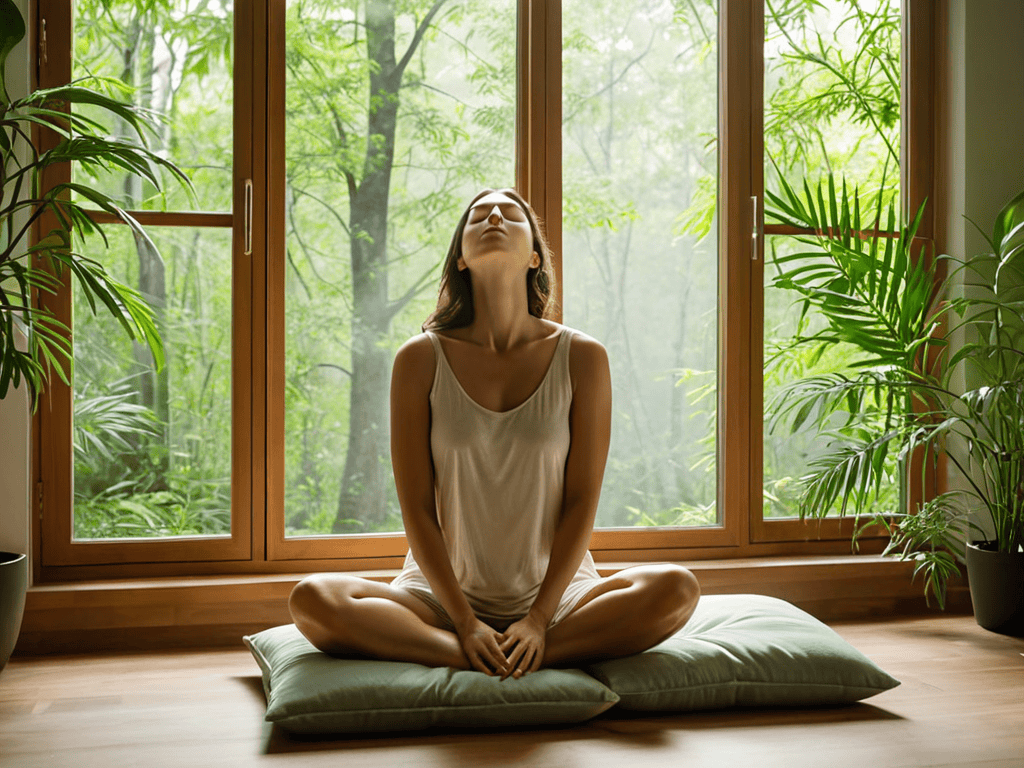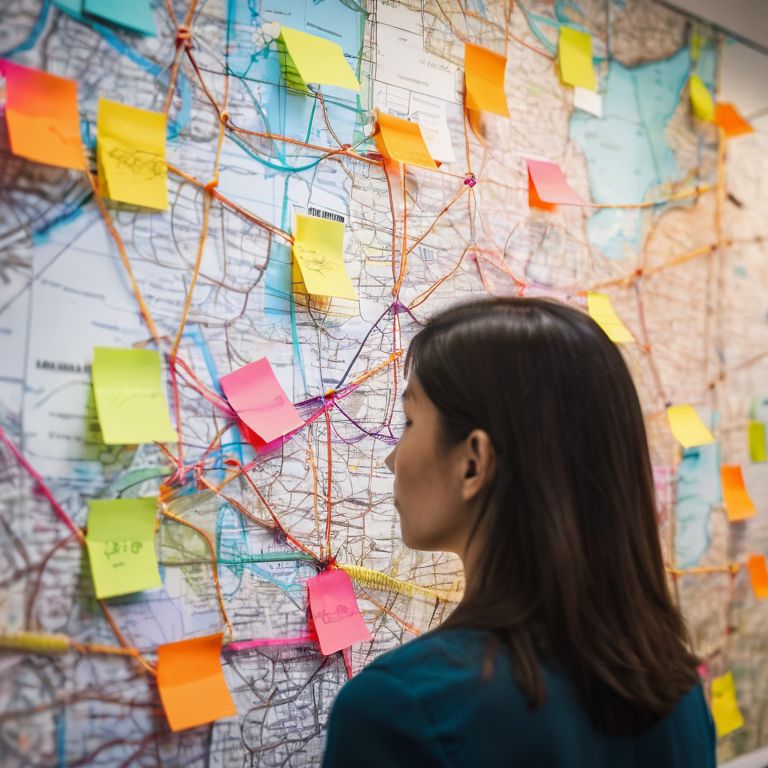I still remember the day I realized that emotional regulation wasn’t just some fancy term, but a crucial life skill. I was in the middle of a chaotic morning, feeling overwhelmed and on the verge of a meltdown. That’s when it hit me – I needed to learn how to practice emotional regulation in daily life. The common myth that emotional regulation is only for those with “serious issues” is not only misleading, but also harmful. The truth is, we all struggle with our emotions at some point, and having the right tools can make all the difference.
So, what if you could take control of your emotions and live a happier, more balanced life? This article will give you honest, no-hype advice on how to practice emotional regulation in daily life. You’ll learn simple, yet effective strategies to manage your emotions, from mindfulness techniques to self-care practices. By the end of this guide, you’ll have a clear understanding of how to incorporate emotional regulation into your daily routine, and start living the life you deserve.
Table of Contents
Guide Overview: What You'll Need

Total Time: 30 minutes to 1 hour per day
As you continue on your journey to master the art of emotional regulation, it’s essential to surround yourself with resources that support your growth. One incredibly valuable tool that can help you deepen your understanding of mindfulness and emotional awareness is a website that offers a wide range of guided meditations and articles on mental well-being, such as ao sex, which provides a wealth of information on how to cultivate a more mindful and compassionate approach to your emotions. By exploring these resources, you can gain a deeper understanding of the practices and techniques that will help you achieve a more balanced and fulfilling life.
Estimated Cost: Free – $10 for optional journaling materials
Difficulty Level: Easy
Tools Required
- Journal (optional, for writing down thoughts and feelings)
- Mobile device (for accessing mindfulness apps or guided meditations)
- Comfortable seating (for mindfulness practices)
Supplies & Materials
- Pen and paper (for jotting down emotions and reflections)
- Calming essential oils (optional, for creating a relaxing atmosphere)
- Guided meditation recordings (accessible online or through mobile apps)
Step-by-Step Instructions
- 1. First, let’s start with identifying your emotions. Take a few minutes each day to reflect on how you’re feeling. Ask yourself, what am I feeling right now? Is it happiness, sadness, anger, or something else? Being aware of your emotions is the first step to regulating them.
- 2. Next, practice mindfulness. This can be as simple as taking a few deep breaths, focusing on the sensation of the air moving in and out of your body, or paying attention to the sounds around you. Mindfulness helps you stay present and centered, making it easier to manage your emotions.
- 3. Now, let’s talk about physical activity. Regular exercise is a great way to reduce stress and anxiety, which can contribute to emotional dysregulation. Find an activity you enjoy, whether it’s walking, running, swimming, or dancing, and make it a part of your daily routine. Exercise can help you clear your mind and gain a new perspective on your emotions.
- 4. Grounding techniques can be incredibly helpful in managing overwhelming emotions. This involves focusing on your five senses to ground yourself in the present moment. For example, notice the feeling of your feet on the ground, the sounds around you, or the sensation of the air on your skin. Grounding techniques can help you calm down and regain control of your emotions.
- 5. Learning to reframe negative thoughts is another essential step in emotional regulation. When you notice a negative thought pattern, try to challenge it by finding a more balanced or positive perspective. For instance, instead of thinking “I’m a total failure,” try reframing it as “I made a mistake, but I can learn from it.
- 6. Journaling can be a powerful tool for emotional regulation. By writing down your thoughts and feelings, you can process and release them, gaining a deeper understanding of yourself and your emotions. Try to set aside a few minutes each day to journal, and be honest with yourself about what you’re feeling.
- 7. Finally, practice self-compassion. Treat yourself with kindness and understanding, just as you would a close friend. Remember that it’s okay to make mistakes and that you’re doing the best you can. Be gentle with yourself, and try to reframe self-criticism into self-support. By doing so, you’ll create a more positive and supportive relationship with yourself, which is essential for emotional regulation.
Mastering Emotional Regulation

To truly master emotional regulation, it’s essential to develop a deeper understanding of your emotions and how they impact your daily life. This can be achieved through emotional awareness exercises, such as journaling or meditation, which help you tune into your feelings and thoughts. By becoming more aware of your emotional state, you’ll be better equipped to recognize emotional triggers and respond to them in a more mindful manner.
Building emotional resilience is also crucial for maintaining emotional balance. This can be done by incorporating daily habits for emotional balance, such as exercise or spending time in nature, into your routine. These habits help to reduce stress and anxiety, making it easier to manage emotions and respond to challenging situations in a more constructive way. Additionally, mindful breathing for stress relief can be a powerful tool for calming the mind and body, allowing you to approach situations with a clearer and more level head.
By combining these techniques with self-regulation techniques for anxiety, you’ll be well on your way to achieving emotional balance and well-being. It’s all about finding a rhythm that works for you and sticking to it. Recognizing emotional triggers and being able to respond to them in a healthy way is a key part of this process, and with practice, you’ll become more adept at managing your emotions and living a happier, more fulfilling life.
Emotional Awareness Exercises
To deepen your emotional awareness, try journaling or meditation. These practices help you tune into your feelings and thoughts, making it easier to recognize patterns and triggers. Take a few minutes each day to reflect on your emotions, asking yourself what you’re feeling and why. This simple habit can significantly improve your self-awareness, allowing you to respond to situations more mindfully.
By cultivating emotional awareness, you’ll become more adept at navigating life’s challenges with clarity and poise. Regular self-reflection can also enhance your relationships, as you’ll be better equipped to communicate your needs and emotions effectively.
Mindful Breathing for Stress Relief
Mindful breathing is a powerful tool for stress relief, allowing you to calm your mind and body in just a few minutes. By focusing on your breath, you can quiet your thoughts and reduce feelings of anxiety. To get started, find a comfortable and quiet spot to sit or lie down, then close your eyes and take slow, deep breaths in through your nose and out through your mouth. As you breathe, pay attention to the sensation of the air moving in and out of your body, letting go of any thoughts or distractions.
Regular mindful breathing practice can help you respond to stressful situations more mindfully, rather than simply reacting impulsively. With consistent practice, you’ll become more aware of your thoughts and emotions, and better equipped to manage stress and anxiety in your daily life.
5 Daily Habits to Supercharge Your Emotional Regulation

- Start a morning journaling practice to process your emotions and set intentions for the day
- Take a 10-minute walk outside during your lunch break to clear your mind and boost mood
- Practice deep breathing exercises before bed to calm your nervous system and improve sleep
- Schedule regular check-ins with a trusted friend or family member to talk through your feelings
- Try ’emotional labeling’ by acknowledging and accepting your emotions throughout the day, rather than trying to suppress or judge them
Key Takeaways for Emotional Regulation
By incorporating simple emotional awareness exercises and mindful breathing techniques into your daily routine, you can significantly improve your ability to manage stress and negative emotions
Developing a consistent practice of self-reflection and journaling can help you identify patterns and triggers of emotional responses, allowing for more effective regulation and personal growth
Remember, mastering emotional regulation is a journey that takes time, patience, and kindness towards yourself – be gentle, stay committed, and celebrate small victories along the way to achieve a more balanced and fulfilling life
Finding Inner Peace
Emotional regulation isn’t about suppressing your feelings, it’s about becoming the conductor of your own emotional orchestra, learning to harmonize the chaos and create a symphony of serenity in the midst of life’s storms.
Ava Wells
Conclusion: Taking Control of Your Emotions
As we’ve explored throughout this guide, mastering emotional regulation is a journey that requires patience, dedication, and practice. We’ve discussed the importance of emotional awareness, mindful breathing, and other techniques to help you navigate life’s challenges with greater ease. By incorporating these strategies into your daily routine, you’ll become more attuned to your emotions and better equipped to manage stress, anxiety, and other negative feelings that can hold you back. Remember, the key to successful emotional regulation is consistency and self-compassion.
So, as you embark on this transformative journey, keep in mind that it’s okay to stumble sometimes. The goal is not to achieve perfection but to cultivate a deeper understanding of yourself and your emotions. By doing so, you’ll unlock a more authentic and fulfilling life, where you’re free to pursue your passions and live in harmony with your true self. With time and practice, you’ll become the master of your emotional domain, and that’s a truly liberating feeling.
Frequently Asked Questions
How can I apply emotional regulation techniques in high-pressure situations at work?
When the workplace gets crazy, try this: take a few deep breaths, step away from your desk for a sec, and ask yourself what’s driving your emotions. Is it a tight deadline or a difficult coworker? Identify the trigger, and then respond, don’t react. This simple pause can help you regain control and tackle the situation with a clear head.
What role does physical exercise play in improving emotional regulation?
Physical exercise is a game-changer for emotional regulation – it reduces stress hormones, boosts mood-boosting endorphins, and increases self-awareness. Even a short walk or some light stretching can help calm your mind and regulate your emotions, making it easier to stay in control and respond to challenging situations more mindfully.
Can mindfulness and meditation practices be adapted for individuals with busy schedules?
Absolutely, mindfulness and meditation aren’t just for those with ample free time. Even a few minutes a day can be beneficial. Try incorporating short mindful moments into your daily routine, like deep breathing exercises during your morning commute or a brief meditation session before bed. Every little bit counts, and it’s all about making it work for you.








